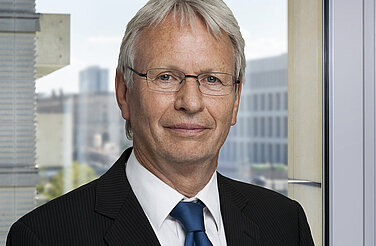-
From 2019, a “Lusatia Structural Change Fund” should be established within Germany’s federal budget.
The aim of the fund would be to strengthen the region’s economic attractiveness and its desirability as a place to live. It should help to: preserve the region’s industrial character, strengthen innovation among its businesses, support its academic institutions, equip it with an up-to-date transport network and digital infrastructure, and foster a lively civil society that retains local residents while also attracting new ones.
-
The Lusatia Fund should be endowed with 100 million euros per year for 15 years, to be divided equally between four key pillars: business development, academia, infrastructure, and civil society.
In each of these areas, it should be possible to use the available funds in a flexible manner (i.e. to shift funding between areas), and funds that are not withdrawn should not expire (i.e. funding should be transferable to subsequent years).
-
Regional stakeholders from the spheres of business, academia, politics, and civil society should play a key role in awarding of funds.
The federal government should only play a monitoring and coordinating role, as part of a steering committee; decisions on funding priorities should be made by stakeholders from the region.
-
The funds assigned to the civil society pillar should be administered by a new “Lusatia Future Foundation.”
Raising the attractiveness of a region means more than just promoting its economy, academic institutions and infrastructure. Ultimately, the vibrancy of a place depends on art, culture, lived traditions and the quality of civil society. These factors require ongoing support, which can be guaranteed in the short term through the Structural Change Fund and in the long term through developing a foundation with a strong endowment.
This content is also available in: German
A future for Lusatia
A structural change plan for the Lusatia coal-mining region

Preface
In Germany’s most recent legislative session, the future of coal-fired energy generation was the subject of frequent and vigorous debate. All parties were nonetheless unanimous that the regions most affected by structural change in the lignite coal industry should not be left to fend for themselves.
Agora Energiewende made a key contribution to the debate through the publication of its Eleven Principles for a Consensus on Coal. One of these principles called for the establishment of a structural change fund at the federal level to assist the affected lignite mining regions. The present paper fleshes out this proposal, taking the Lusatia region as an example.
The proposal resulted from intensive discussions with Lusatia-based stakeholders from the spheres of business, academia, politics and civil society. The aim of these discussions was to bring together a wide range of ideas and initiatives from the region, in order to formulate a concrete proposal that would accommodate a broad spectrum of interests.
What is ultimately at stake here is the structural development of the Lusatia region for the 21st century. The key elements of this development include an innovative economy, a prominent place in Germany’s energy transition, up-to-date infrastructure, and a cultural sphere that encourages people to remain in or return to the region. Such a development process of course works best when a region can shape its own future, rather than having decisions made for it elsewhere.
Our proposal seeks to drive forward a debate that has already been underway for some time in the region, and that now urgently needs to bear fruit. We look forward to hearing your responses and suggestions, so that we can reach the best decisions as soon as possible.
Key findings
Bibliographical data
Downloads
-
pdf 998 KB
A Future for Lusatia
A Structural Change Plan for the Lusatia Coal-Mining Region




